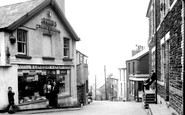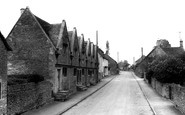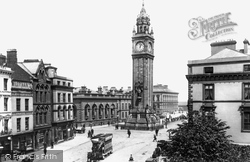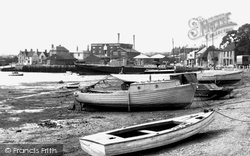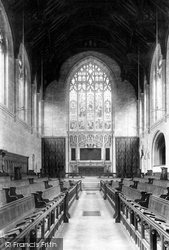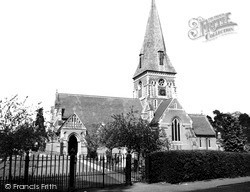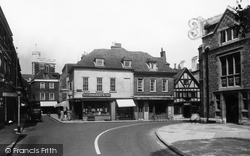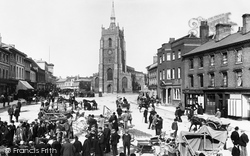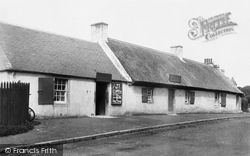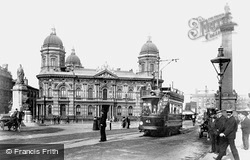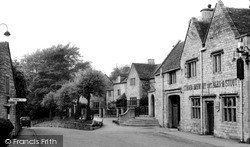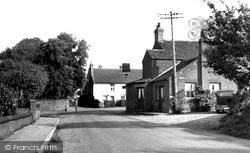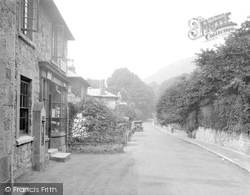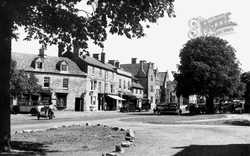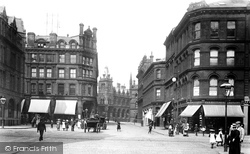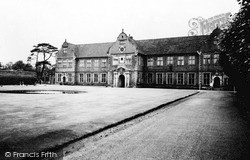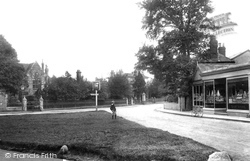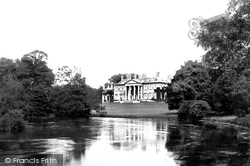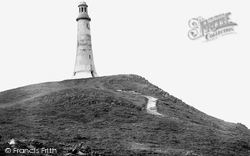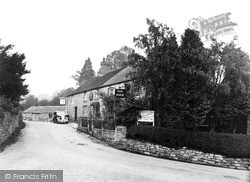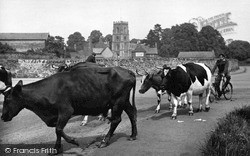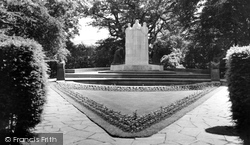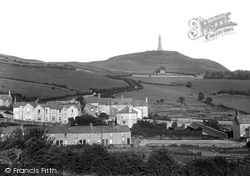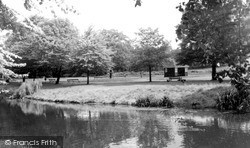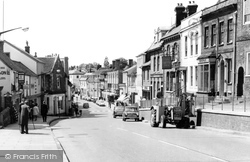Places
2 places found.
Those places high-lighted have photos. All locations may have maps, books and memories.
Photos
Sorry, no photos were found that related to your search.
Maps
9 maps found.
Books
Sorry, no books were found that related to your search.
Memories
1,564 memories found. Showing results 31 to 40.
1977 1996
Hi, I am Adam. I moved to Nazeing in 1977, aged 3 years old, with my mum and dad. We moved down from Harlow, to be nearer my grandparents. I went to Nazeing Primary School and so did my younger sister Joanne, born 1979. She also went to ...Read more
A memory of Nazeing in 1977 by
1 A High Street, Garndiffiath
My name is Robert Gwillim, I lived at 1A High Street with my parents Edward & Betty from when I was born in 1955 until April 1962. My sister, Carol, was born in December 1961. My parents had lived at 1A High ...Read more
A memory of Garndiffaith in 1960 by
2,Almshouses. Kington.St.Michael
Ggg.grandad Worthy Tanner lived here in 1881 with his wife, Elizabeth and grandson Alfred Tanner. Worthy was born at Langley Burrell in 1804 and was an agricultural labourer all his working life. It seems that the Tanner name originated from this area back to 1566.
A memory of Kington St Michael in 1880 by
20 Boscombe Road, Boscomebe Down
I was born here, don't know much about the place, wondering if anyone has any information. Dad was in the army about 1961 Royal Artillary, John Collins. Any information or photos would be great.
A memory of Great Durnford in 1961 by
25 Parkgate Road
I was born in Battersea 1950, son of Mr & Mrs Redpath (Wally & Edith) I had two other brothers Terry & Garry. Fond memories of Battersea Park and of spending many days in and around the park with other kids from ...Read more
A memory of Battersea in 1950 by
25 Years In Beaconsfield.
Born in Wembley, I arrived in the New Town of Beaconsfield in 1957 aged 5. With my younger sister and my parents. I left home at 17 but returned occasionally until 1981 when my parents moved to Scotland. I lived in ...Read more
A memory of Beaconsfield by
258 Furlong Road
I was born at 258 Furlong Road in 1944. I lived there with my mum and gran for 5 years till we moved over to Purston Featherstone in 1950. My gran was called Elsie Nowell, the years we spent there were wonderful...I ...Read more
A memory of Bolton Upon Dearne in 1944 by
2up And 2down!
My father was born in Ford Street Hockley Brook Birmingham in 1936. He was the youngest of 6, 2 sisters and 3 brothers. Ford Street consisted of a row of houses on one side and factories on the other side. The houses were 2 up ...Read more
A memory of Birmingham in 1940 by
3 Beach House Turnchapel..
My name is Susan my family were the Dungey’s living in Turnchapel.My grandmother (Maud) lived at house 3 Beach view until she died in the late fifties. Bringing up a large family including my Mother who was the youngest ...Read more
A memory of Turnchapel by
333 Deansbrook Road
I went to Woodcroft Primary School in 1966. I was born in Borehamwood, moved to Burnt Oak in 1962. It was a great place to live. Watling park, Blundell park, great times xx. I remember Debbie Davies, Lizzie True, Cheryl ...Read more
A memory of Burnt Oak in 1971 by
Captions
137 captions found. Showing results 73 to 96.
She grieved her loss for the rest of her long life, and the Kingdom mourned with her. She symbolised a nation that was the great maritime empire-builder and the workshop of the world.
Humanity ordained that the soldiers received basic nursing care, but many of them could not be nursed back to health, and died in a foreign land without family to mourn them.
Queen Victoria and her daughters, Empress Frederick and Princess Beatrice, visited the new chapel on March 19, 1891, when the Empress unveiled a statue of the Queen over the gateway into the Quadrangle
The 1893 reredos is by Pearson, and the church has a remarkable painting of The Mourning of Christ after Van Dyck, the original of which hangs in the Berlin gallery.
Public executions were held in The Square in earlier days, with the bell of St Lawrence's tolling mournfully as the victim was brought before the crowd.
Georgian buildings line Market Hill, with St Peter's Church at the top. The artist Thomas Gainsborough was born in Sudbury in a former 16th century inn, and he lived and worked here for many years.
Robert Burns was born here on 25 January 1759. The cottage was rebuilt by the poet's father and later became an inn.
The Doric column on the right is a monument to William Wilberforce, who was born in Hull, and was responsible for the abolition of slavery throughout the Empire.
The large lettering of the Stroud Brewery across the façade takes precedence over the smaller hanging signs of the Prince Albert Hotel on this attractive corner.
The name of this inn is the Hero, after the most famous inhabitant of the Burnhams: Horatio Nelson, born in the rectory of nearby Burnham Thorpe, and later to become England's greatest admiral, and victor
Bonchurch stands on the steep slopes of St Boniface Down. Both the hillside and village are named after the Devon-born churchman who brought Christianity to Germany.
By the 1950s, with the advent of popular motoring, Broadway was starting to attract car-borne tourists in considerable numbers.
One year after this photograph was taken, lines were laid for the new electric tramcars. These continued to run through Tyrell Street until 5 November 1949.
A few hundred yards from the hall stands South Farm, where Mary Ann Evans was born in 1819.
Today Frimley is very much absorbed into the town of Camberley, while this particular corner is a busy road junction.
Situated to the south of the town, overlooking the Test, Broadlands is an imposing porticoed house remodelled in classical style by 'Capability' Brown and John Holland in the mid 18th century.
The Hoad Hill Monument at Ulverston is a replica of the Eddystone Lighthouse, and was built as a memorial to Sir John Barrow, founder of the Royal Geographical Society and for 40 years Secretary to the
The village was formed around a Celtic monastery, which in turn became a shrine to St Cedd in 1078. 19th-century architecture took hold in the village after the building of Lastingham Grange.
Thomas Babington Macaulay, Rothley's most famous son, was born at Rothley Temple on St Crispin's Day, 1800, the son of the anti-slaver, Zachary Macaulay.
Dating from 1926, the war memorial was opened by the Earl of Derby, though its cost was borne by Caleb Thornber, a cotton manufacturer and former Mayor of Burnley.
In the foreground are allotments, now buried under housing. On the hill is the monument to Sir John Barrow, which is a replica of the Eddystone lighthouse.
Edward Melly was born in Liverpool in 1857, but came to Nuneaton after being educated at Rugby School.
The long village High Street running down from the ridge overlooking the Weald and the 13th-century church of St Peter is lined with picturesque tile-hung cottages.
On the right, near the tractor, is Leighton's the opticians. Next-door-but-one we can see the sign of the Castle public house. Before the mid 1870s, it was called the Tumble-down Dick.
Places (2)
Photos (0)
Memories (1564)
Books (0)
Maps (9)

